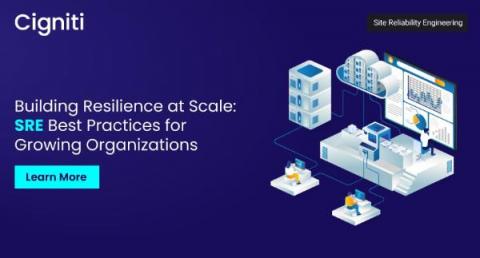Systems | Development | Analytics | API | Testing
SRE
Elevate Your Digital Infrastructure with Cigniti's Site Reliability Engineering
Building Resilience at Scale: SRE Best Practices for Growing Organizations
In the ever-evolving landscape of technology, where uptime, performance, and user experience are paramount, Site Reliability Engineering (SRE) has emerged as a crucial bridge between development and operations within organizations. SRE goes beyond traditional IT roles by emphasizing the fusion of software engineering practices with IT operations to ensure systems are functional, highly reliable, and scalable.
From load testing to a reliability testing tool (k6 Office Hours #92)
How to use k6 for SRE (k6 Office Hours #90)
What is SRE (Site Reliability Engineering), and How to Use It
Read this guide to learn how site reliability helps development teams accelerate reliable software delivery.
Why Observability is Critical to Site Reliability Engineering
Learn what observability is and why it matters to Site Reliability Engineers.
Why Site Reliability Engineering is a Key Enabler for Enterprises to Maximize Business Agility?
Agile methodologies are transforming and speeding up the development lifecycle of businesses, but operations are not being changed or speeded up in the same way. While the operations teams frequently struggle to keep up with this pace, it increases operational challenges in the application landscape. To make the whole IT operation more ‘agile’, it is critical to alter operations to par with how development processes are transformed.
Site Reliability Engineering and performance testing with Stephen Townshend (k6 Office Hours #32)
Error Economics - How to avoid breaking the budget
At SLOConf 2021 I talked about how we may use error budgets to add pass/fail criterias to reliability tests we run as part of our CI pipelines. As Site Reliability Engineers, one of our primary goals is to reduce manual labor, or toil, to a minimum while at the same time keeping the systems we manage as reliable and available as possible. To be able to do this in a safe way, it's really important that we're able to easily inspect the state of the system.











